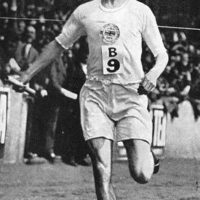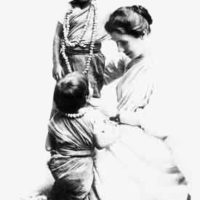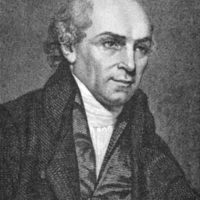 Early Life
Early Life
Livingstone was born in a small town in Scotland on March 19, 1813. As a child in school, he had a great interest in science, which eventually led him to being a medical doctor. In 1832, Livingstone read a book about the need for medical doctors in China, and from this day on, he knew God was calling him to be a medical missionary to China.
London Missionary Society
During medical school, Livingstone was accepted to become a missionary with the London Missionary Society- and continued to do his training with them. In 1839, the Opium War broke out in China, which changed the course of Livingstone’s plan-he could no longer be a medical missionary to China. The London Missionary Society suggested he go to the West Indies to be a missionary instead, but while training with the London Missionary Society, Livingstone met Robert Moffat who explained to him about the great need for medical missionaries in South Africa.
On to South Africa
In 1840, Livingstone began his travels to South Africa. When he got on the boat, he soon became disgruntled. The Rosses had decided to head to South Africa with him to be missionaries, but it soon became apparent they were too much concerned about their discomfort. Livingstone called them “Veranda Missionaries” after the porches of mission stations, because they sought comfort and ease as opposed to the challenges of missionary life.
Stuck in Cape Town
Livingstone’s boat docked in March 1841, but much to his dismay, he had to stay on the shore in Cape Town for a month because the mast of the ship was being repaired. During this time, the Rosses started expressing doubts about going inland and thought about staying in Cape Town. While he waited, Livingstone did evangelism by handing out tracts and Bibles to the locals. A month later in April, they were on their way to Kuruman near the border of Botswana.
Want to Leave a Legacy
The Ross’s and Livingstone ended up in Kuruman in July 1841. Livingstone was encouraged because there was a church there started by his friend Robert Moffat. Initially he had thought there were 400 believers, but in reality Moffat there were only 40. Livingstone was shocked by the fact there were only 40 converts to show for 20 years of missionary service. He did not want to be a missionary whose work only resulted in few salvations: instead wanted to have a legacy that would go beyond him.
Restlessness
In July 1841, Livingstone began to become restless of staying in one place. He decided to leave Kuruman and explore the interior of Africa with Roger Edwards, another missionary. At first, Edwards was opposed to going because he was not sure who would take care of the mission. Dr. Livingstone reminded him of the Rosses.
Journey North
Convinced, both Livingstone and Edwards headed north in September 1841. Two weeks after leaving Kuruman, they came to a village called Mabotsa. The chief welcomed them heartily with a feast. The villagers were curious about what was in the wagon they were traveling in. When they saw Livingstone’s medical bag, they pleaded with him for help. For five days, Dr. Livingstone provided medicine to all the ill in Mabotsa. On the fifth day, Edwards and Livingstone decided to move on because Edwards wanted to go back to Kuruman, but Livingstone persuaded him to go further north. During this time, Livingstone began to feel like he was the only missionary who wanted to explore and reach those areas never exposed to the Gospel.
Adventures with Family
Livingstone continued to go inland despite the dangers he faced. Multiple times he became ill with malaria multiple times. He got married to Mary Moffat in January 1845 in Kuruman. Mary and her children all became ill during his trips. Some of their children died of sickness. In 1853, David Livingstone made Mary and the children take a ship back to Scotland to stay with his family, knowing they would be safer there.
Discouraging Trip
On one of these trips in April 1851 was to reach Chief Sebitoane, who was the key to reaching tribes in North Africa. When the Livingstone’s got to the village in July of that year, Chief Sebitoane was ill with pneumonia. Dr. Livingstone had no way to care for the chief. Ultimately, the chief died because Dr. Livingstone had no cure for his illness. This discouraged Dr. Livingstone, who hoped to befriend Chief Sebitoane and have an opportunity to share the good news with them in those areas.
Royal Geographic Society
During his time in Africa, Livingstone mapped out the places he visited and sent his findings to the Royal Geographic Society in England. In his journey, Dr. Livingstone would map out the places he visited. The Royal Geographic Society was impressed by his work and awarded him a gold medal and 25£, a surprise to Livingstone.
Government Position
After this, Livingstone was given an official government position by the British government. Livingstone resigned from being a missionary, thinking it would help the cause of opening up new lands for the gospel by opening the Zambezi River as an area of trade.
The Return of Mary Livingstone
In January 1862, Mary Livingstone became restless in Scotland and decided to go back to Africa. She continued to travel with Dr. Livingstone until April 1862, when she died on a journey up the Zambezi River from a bout of Malaria. Dr. Livingstone became really lonely and ready to die for the first time in his life.
Trip to India in Riverboat
In July 1864, Livingstone traveled from Africa to India in a riverboat. He arrived in the port of Bombay; no one was sure how to respond. He was greeted and hosted by the mayor of Bombay. Soon after, he sailed to London where people were waiting for his return.
After visiting with government officials and other important people, Livingstone spent time with his family. During Livingstone’s time there, his mother died.
Medicine Bag Stolen
On his way back to Africa in January 1867, Livingstone’s medicine bag was stolen. This proved treacherous to Livingstone who from this point on experienced frequent bouts of malaria. The only thing that kept him alive was traveling and befriending Arab slave traders who had plenty of medicine. This also gave Dr. Livingstone the opportunity to share the Good News with them.
Henry Stanley
In November 1871, Livingstone met Henry Stanley, a news reporter. Stanley and Livingstone went on an adventure on Lake Tanganyika. Livingstone was disappointed. He had hoped Lake Taganyika would lead to the source of the Nile River, but from what he found it was highly unlikely.
Death of Dr. Livingstone
After this trip, Dr. Livingstone was ill with another bout of Malaria and Stanley had to nurse him back to health.
In 1873, Livingstone became seriously ill. One night in April, he got out of bed to pray. The next morning, he was found dead in that position.
Livingstone’s body was sent back to England, but his heart was removed and buried in Africa.
The Legacy of Dr. Livingstone
The United Free Church of Scotland built a mission station in honor of David Livingstone in Central Africa.
The works of David Livingstone has been an inspiration to many and have motivated many to become missionaries.





It is believed that his box of medicine was stolen in Zambia, he died in the Zambian soil at chitambo village